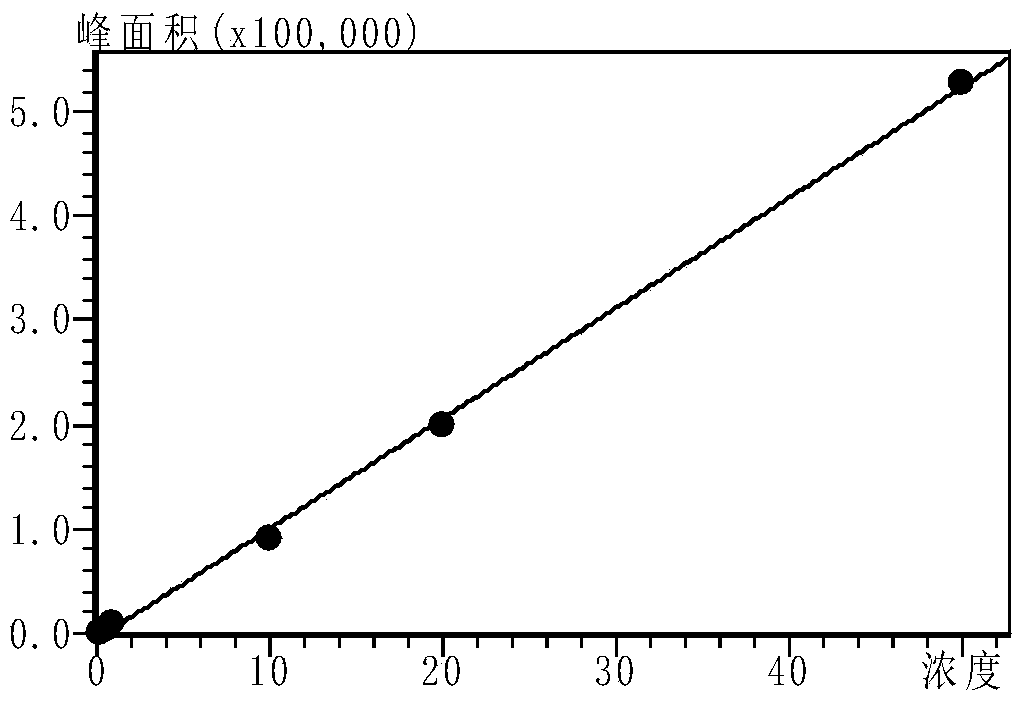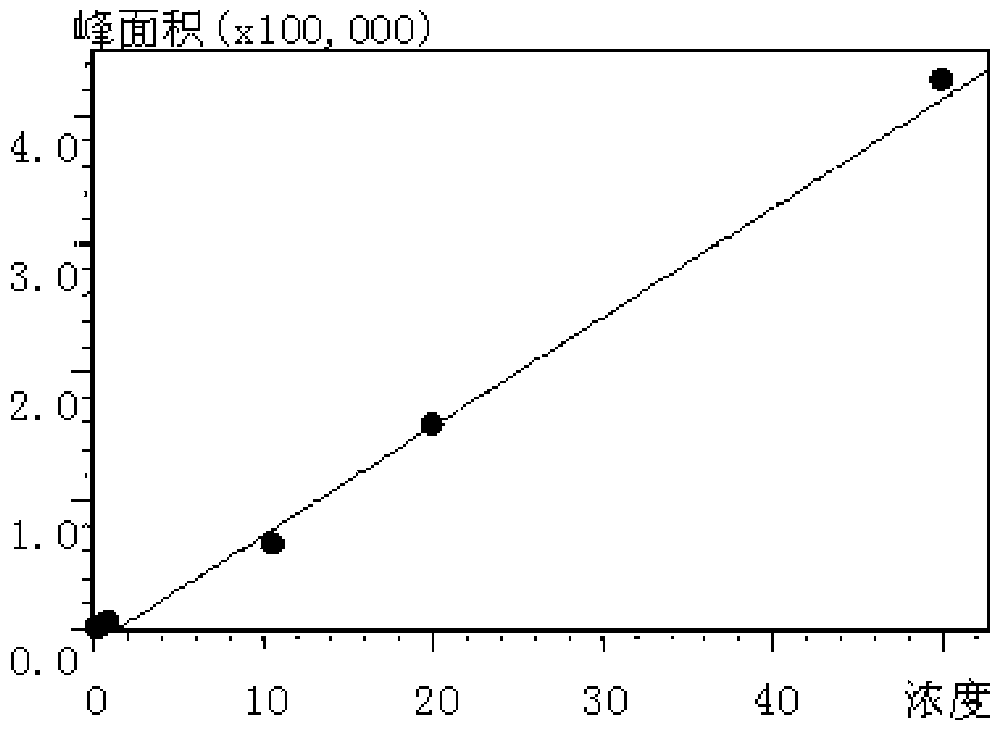Method for detecting organophosphate flame retardant
A technology of organic phosphate ester and flame retardant, which is applied in the direction of measuring devices, instruments, scientific instruments, etc., to achieve the effect of accurate method, high sensitivity, and simple sensitivity
- Summary
- Abstract
- Description
- Claims
- Application Information
AI Technical Summary
Problems solved by technology
Method used
Image
Examples
Embodiment 1
[0036] Example 1: Determination of the contents of three chlorine-based organic flame retardants in toy samples
[0037]1. Sample treatment: Accurately weigh 1.0g sample, put it in a microwave extraction tank, add 15mL acetone, vortex for 2min, microwave extraction at 75°C for 20min, collect the extract into a chicken heart bottle; use 15mL acetone for the second For the second extraction, microwave extraction at 75°C for 20 minutes, combine the two extracts, rotary evaporate to 1mL, and then blow dry with a nitrogen blower; use 1mL acetone to make up volume, and filter with a 0.20μm microporous membrane to obtain a sample solution;
[0038] 2. Prepare standard working solution: Weigh 25mg (accurate to 0.1mg) tris(2-chloroethyl)phosphate, tris(2-chloro-1-methylethyl)phosphate and tris(1,3 - dichloroisopropyl) ester standard substance, is mixed with acetone respectively to the standard working solution that concentration is 0.1, 0.5, 1.0, 10, 20, 50mg / L;
[0039] 3. Determinat...
Embodiment 2
[0050] Embodiment 2. Extraction condition optimization experiment
[0051] 1. Optimization of extraction solvent
[0052] Considering the chemical properties, price and toxicity of various solvents, the effects of six organic solvents of different polarities on methanol, ethanol, acetone, acetonitrile, n-hexane and ethyl acetate on the resistance of three chlorine-based organophosphorus in the sample were investigated. The extraction effect of fuel. Sample processing was carried out according to the method in Example 1. The experimental results are shown in Table 4. As can be seen from Table 4, the comprehensive extraction efficiency of acetone to the target analyte in children's toys is higher than methanol, ethanol, acetonitrile, n-hexane and ethyl acetate, therefore, the present invention selects acetone as the most preferred extraction solvent.
[0053] Table 4: Extraction recoveries of target analytes by extraction solvent type
[0054]
[0055] 2. Optimization of ...
Embodiment 3
[0059] Embodiment 3: precision and recovery rate experiment
[0060] Using the method of Example 1, the standard addition recovery experiment was carried out on the blank sample of children's toys not containing chlorine-based organophosphate flame retardants. The recovery rate and precision results of 6 parallel determinations are shown in Table 5, and the precision data table is shown in Table 6.
[0061] Table 5: Recovery and precision (n=6)
[0062]
[0063] Table 6: Precision data table (1mg / L TCEP, TCPP and TDCP)
[0064]
[0065] The recovery rate of standard addition of this method is between 82.0% and 94.2%, and the relative standard deviation is 4.63% to 7.96%. The method is accurate, fast, simple and sensitive, and can be used for the actual detection of chlorine-based organophosphate flame retardants in children's toys.
PUM
| Property | Measurement | Unit |
|---|---|---|
| linear range | aaaaa | aaaaa |
Abstract
Description
Claims
Application Information
 Login to View More
Login to View More - R&D
- Intellectual Property
- Life Sciences
- Materials
- Tech Scout
- Unparalleled Data Quality
- Higher Quality Content
- 60% Fewer Hallucinations
Browse by: Latest US Patents, China's latest patents, Technical Efficacy Thesaurus, Application Domain, Technology Topic, Popular Technical Reports.
© 2025 PatSnap. All rights reserved.Legal|Privacy policy|Modern Slavery Act Transparency Statement|Sitemap|About US| Contact US: help@patsnap.com



